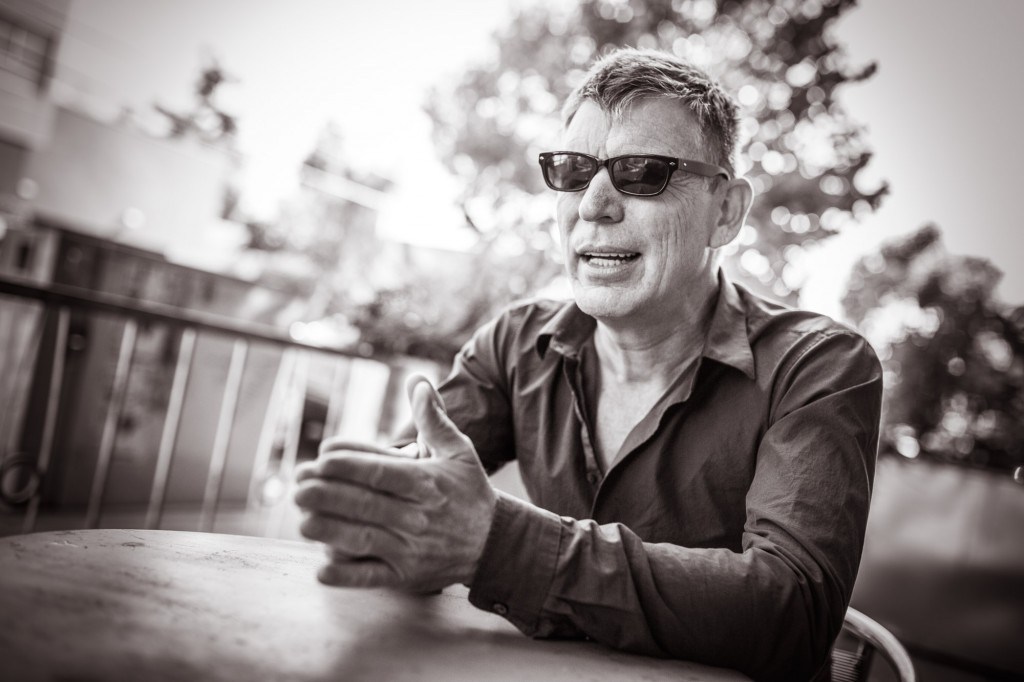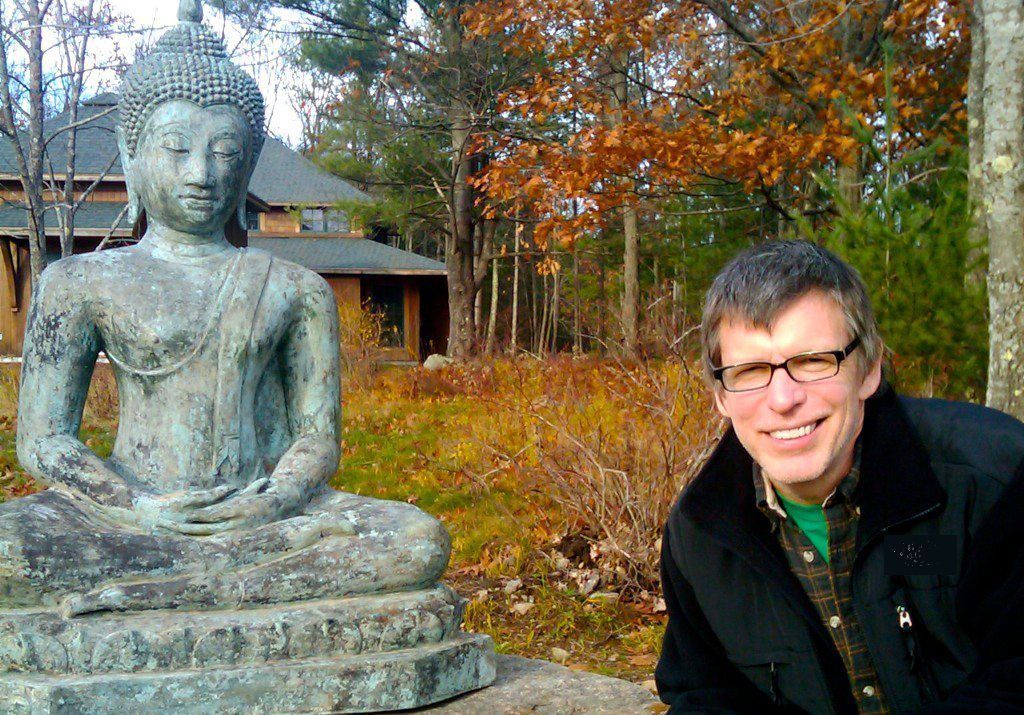5 Reasons Your Mindfulness Practice Has Stalled & How to Reboot It
By Michael W. Taft //
It happened to me, and it’s happened to many people I know. You have learned to sit still and follow your breath. You can directly contact the reality of the present moment. You can go deep. The power of meditation practice has made itself manifest, you’ve experienced real benefit, and it’s given you a significant edge on life. But year after year, you’re practice is not developing any further. You’re not gaining new insights and it’s not engendering new and positive behaviors anymore. The wind has gone out of your sails, and you’re in the doldrums.
This is the definition of being “stuck in a good place.” Don’t get me wrong: it’s much better than not having a meditation practice at all, but now you’re treading water. If you don’t change something at this point, you’ll probably remain trapped on this plateau for a very long time, even the rest of your life. I’ve seen it happen to lots of people.
I’ve taught meditation to thousands of people, and in my experience there are five big reasons they end up in this situation, and several corresponding ways to get yourself back on track again. As your meditation trail guide, I’ll take this opportunity to point you in the right direction here. These are surefire ways to give yourself and your practice a mindfulness reboot.
1. You Don’t Know How to Go Deeper
Most meditation teaching—especially in the mindfulness field—will give you competent instruction in the basics, and leave it at that. That’s not a bad thing. Even the basics of mindfulness are very powerful and can take you a long way. But at some point it’s necessary to go beyond the basics, and if you don’t have any clue about how to do that, you’ll just be doing the meditative equivalent of wheelies in the parking lot forever. I have met many people who have practiced for twenty years or more, and who are convinced that you don’t need to know anything beyond the basics. They’re metaphorically stuck in grade school, and long ago realized that they’re not going any deeper in their practice.
“If you don’t change something at this point, you’ll probably remain trapped on this plateau for a very long time, even the rest of your life. I’ve seen it happen to lots of people.”
The cure for this state is to graduate to metaphorical middle school. Challenge yourself to begin working with more sophisticated mindfulness techniques that require higher concentration and deeper equanimity to master—you’ve probably built up more than enough skill at the foundations by this point. What specific techniques am I talking about? Here are some suggestions: focusing on details of impermanence in a sensation, meditating on thought as an object, learning to deconstruct the sensations of meditative calm. There are many, many more, of course. If it’s not clear to you what I mean by these techniques, then it’s time for you to find out.
The Internet can be very helpful with this. There are a huge number of online courses that can teach you all sorts of new techniques, different understandings and viewpoints, and other ways to go further and deeper in your work. Besides teaching you new ways to practice, these have the added advantage of getting your out of your comfort zone. One sure way to get yourself out of the metaphoric weeds is to just do something completely different with your practice. How about trying something totally verboten in the mindfulness world, like chanting songs or doing mantra practice? Some people get a lot out of going to advaita satsangs. Check out some old-school Vajrayana (i.e Tibetan Buddhism), or go sit at a Zen sesshin.
Whether it’s going further in your own tradition or trying something completely new, the important thing is to start engaging again and get back into the swing of fruitful practice.
2. You’ve Lost the Point
Meditation is not an easy practice. It requires effort, commitment, and real discipline to get anywhere. It’s worth if, of course, but as with anything similar, if you forget why you’re doing it, it becomes a meaningless chore. I remember times when I had been sitting so regularly for so long that I had lost all sense of what meditation was and why I was doing it. What I needed was a good dose of inspiration, a really fiery hit of awe, wonder, and possibility to rekindle the fire under my ass. By practicing in retreat with my teacher Shinzen, I remembered why I was doing it in the first place. I got re-energized and began making progress again.
People will tell you that there’s nowhere to go and nothing to gain. And in one sense that is true. Practicing with an eye to “gaining something” can sometimes be counterproductive. But in another way of looking at it, your mindfulness practice has the power to utterly change your life. You can improve almost any behavior, and begin to see yourself growing week by week. You can even begin to contact levels of real awakening. Yes, enlightenment.
For some people, enlightenment sounds like nothing but the ridiculous fantasy of religious dupes; for others it’s a state of such purity and perfection that it’s almost godlike. Both of these ideas just get in the way.
Awakening is actually much more specific and tangible than the way it is often presented. Awakening means to see that there is no “person” inside yourself that is the real, authentic “you.” Instead there are simply rising and falling activities of thinking and feeling, activities which by their nature are always and forever changing. This sort of awakening comes about by deep mindfulness meditation (and other practices).
When you make awakening either nonexistent or too fabulous, it becomes unattainable. With proper understanding and instruction, however, real enlightenment is available to almost anyone willing to put in the time and effort.
An even worse misunderstanding of awakening, common in American Vipassana traditions, that practicing with the goal of enlightenment is negative because it’s “goal-oriented.” These traditions strongly discourage talking about or practicing towards awakening because, supposedly, doing so will make it harder to attain. Instead, they contend, you should maintain an attitude of practicing without trying to get anything.
While there is some merit to this viewpoint, it is taking things too far. Yes, it’s possible to get so obsessed with trying to “get somewhere” that you miss the point and even get in your own way. But to discourage practicing towards awakening altogether is a terrible misstep. It leads to people doing years and decades of practice and—surprise, surprise—never getting anywhere.
As the traditional wisdom has it, meditation is like “using a thorn to remove a thorn.” That is to say, yes, practicing with a goal orientation can be a block, but it’s a block that removes all the other blocks. That’s what the Buddha meant when he said that meditation was like a boat that you use to cross a river. When you get to the other side, you don’t need the boat any more.
So never forget that you always have the capacity to grow more awakened, to learn more, to understand more deeply, to love more completely. Remembering it will reignite your practice again.
3. You’re All Alone
Being a serious meditator can be lonely sometimes. Your friends and family may not understand what you’re doing, or may even be unsupportive or critical of it. Human beings evolved as social animals; in some ways, our community is everything. Having people who you can connect with and talk to about your meditation is crucial.
Our technological and social media society can really come to the rescue here. There may be few serious practitioners in the world out there, but most of them are available online somewhere.
Podcasts – There are some amazingly helpful meditation podcasts out there. They exist for every level of experience and meditative tradition. The Deconstructing Yourself website is also a podcast, and furthermore recommend others like Buddhist Geeks. The conversation is one way in any podcast, it can work wonders for helping you to feel that there are others like you out there in the world. (List your favorite in the comments.)
Twitter – Twitter is one of my favorite venues for connecting with meditation teachers of note. While they are often talking about topics other than meditation, it’s surprisingly easy to engage them in a serious conversation about practice. It’s also interesting and instructive, on some level, to see how they talk about other topics. My friend Kenneth Folk (who is a highly qualified mindfulness instructor) has a Twitter feed worthy of connecting with, especially if you don’t mind a lot of side commentary about Bitcoin. (List your favorite meditation teacher’s Twitter feed in the comments.)
Facebook Groups – (Note: FB is a malicious site, however…) If you’re already spending time on Facebook, getting involved in a serious meditation group can be extremely helpful and even fun. An active group can have hundreds or thousands of members, and if it’s well moderated, the level of conversation can be very deep. Unlike podcasts or even Twitter to some extent, in a Facebook group, the conversation can be more two-way, so it’s much more likely that you’ll develop some genuine and heartfelt connections in this way. In a good group, you can cultivate a cyber-sangha of people who are actually supporting each other’s practice. It’s good to be picky, however. Many groups mainly function as an advertising vehicle for a teacher or meditation center and those don’t typically work as well for connecting with others about the details of your life and practice and theirs. One that I recommend is The Eastside Mindfulness Collective (full disclosure which is run by friends of mine, including Jessica Graham of Deconstructing Yourself). You’ll find people actually talking about their practice, as well as meditation in general here. Other excellent groups are hidden/secret, and I suggest you search around until you find something you like. If you don’t know where to begin, however, you are always welcome in my Mindful Geek Group, which is public. (List your favorite FB mindfulness group in the comments.)
Reddit – Believe it or not, Reddit hosts a couple of very active and interactive groups, which are relatively free from trolls, griefers, and marketers. They are /r/mindfulness and /r/meditation. Even better, these days can be /r/streamentry and /r/themindilluminated. You can find a lot of very good information here, and talk to people who you can actually get to know. These are both groups buzzing with energy. One of the best things about them is they are not dedicated to any one teacher or tradition, especially /r/mindfulness. Like any forum, you have to be on the lookout for bad information in there, but the bad is greatly outweighed by the good. Getting out of the box of whatever tradition you’re in and at least reading about another form of meditation which is quite different is always challenging and refreshing.
Buddy System – Even if you live in a sparsely populated backwoods area, or perhaps on an island off the coast of Canada somewhere (lucky you!), I encourage you to make use of the buddy system. Find at least one human being somewhere who is also doing mindfulness practice and meet with them one a week to discuss both of your practices. It works! If you can’t find a friend in meatspace, find one online!
Go to Retreats – Tabla (a type of drum) virtuoso Zakir Hussain was born into a family of tabla players. His father began Zakir’s daily lessons when he was just three years old. Zakir continued the lessons throughout his childhood, and became very good at drumming. Daily practice had it’s effect. And yet there was something more he could do. When he was 17 years old, Zakir went on a special drumming retreat. He played the tabla every minute he was awake for 45 days solid—that’s almost seven weeks of continuous drumming! This experience changed the way he played his instrument fundamentally. As Zakir himself said, “I saw things in the music that I had never seen before, new combinations, new patterns.” This retreat took Zakir from being merely a very good tabla player to being a true virtuoso of the instrument.
 Something similar is possible with meditation practice. Daily sitting is both necessary and highly effective and yet, if you’re willing to put in some dedicated retreat time you can take your practice further than you ever imagined. Retreat practice can be just the thing for digging you out of your stuckness and getting yourself back into the flow of curiosity, exploration, and engagement again.
Something similar is possible with meditation practice. Daily sitting is both necessary and highly effective and yet, if you’re willing to put in some dedicated retreat time you can take your practice further than you ever imagined. Retreat practice can be just the thing for digging you out of your stuckness and getting yourself back into the flow of curiosity, exploration, and engagement again.
Spending 45 days in a row meditating would be nice. I’ve done meditation retreats as long as 92 days. There are people who do even longer retreats than that regularly. But you don’t have to check out of daily life for months at a time to get the benefits of retreat practice. Even a day or two of dedicated sitting, usually in the company of other committed practitioners, can be tremendously beneficial.
Most retreats of more than one day are residential—i.e. you sleep at the retreat facility. By staying in the atmosphere of the meditation practice, you can dive ever-deeper into the profounder elements of your sitting. If doing a residential retreat is too much, there are even retreats which you can do in your own home via the phone. No matter how you do it, getting into retreat practice is virtually guaranteed to help you to overcome stagnation.
Practice in Life – Meditation is not just something you do to get better at meditation. The real intention is to improve your life and the lives of those around you. It’s crucially important, then, that you take your meditation off the cushion and begin to do it during your everyday life—or what is called “practice in life.” Because mindfulness meditation is about contacting present-moment awareness, it’s particularly well suited for practice in life (PIL).
PIL is a fabulous thing to take up, because it forces you to bring mindfulness into all sorts of difficult, unusual, or “non-meditative” situations. Think about it. It’s one thing to be able to shoot baskets all alone on an empty court, and quite another to do it while the other team is trying to stop you, people in the stands are yelling, and you’re moving really fast.
PIL is not hard to do. Simply take whatever favorite practice you have and try to do it out in the world. Breath sensation meditation is an easy one. You can walk around all day feeling your breath. Another common one is walking meditation, where you stay in contact with the feeling in the soles of your feet as you move about.
My favorite by far is to meditation on emotional sensations in the body. Staying in continuous contact with emotional sensations is a truly life-changing practice. Each situation all day long provides its own mini-banquet of tiny (and sometimes large) emotional sensations to track. Doing so increases intuition, and the ability to connect with others. Try it out!
4. Spiritual Bypassing
Human beings can sometimes be their own worst enemies. In meditators it often takes the form of what is known as “spiritual bypassing.” Spiritual bypassing means to use your meditation practice as an excuse for never digging into the difficult or uncomfortable issues in life. It is a form of escapism or checking out. Here are some examples of spiritual bypassing:
- Trying to walk about with an air of being chill, unaffected, and cool about everything.
- Feeling that any negative emotion is a problem or something to get rid of.
- Retreating from life to live in a world of spiritual ideas and books, rather than people and situations.
- Saying that bad or difficult things (especially your own behaviors and actions) aren’t a problem because they’re “just an illusion” anyway.
- Saying that anything isn’t a problem because it’s “just an illusion.”
The common element is the mistaken idea that spirituality will somehow make everything OK and if you are a spiritual person you will never have a problem or feel bad. Not only is this literally the opposite of Buddhist philosophy—the Buddha constantly noted that life is filled with suffering, and that this suffering was an important focus of practice. Real spirituality embraces the fact that life includes pain, suffering, difficulties, death, disease, old age, poverty, and myriad other tragedies. Pretending that these things don’t exist, or that they don’t bother you, is not spiritual or deep. It’s also a stance that will keep you from going any deeper in your practice. Why? Because if your meditation is really doing the work, it will sometimes be upsetting, disturbing, release very difficult emotions, and also make you sensitive (not chill or cool) to the suffering of others.
“I remember times when I had been sitting so regularly for so long that I had lost all sense of what meditation was and why I was doing it.”
In mindfulness practice, the best way to deal with the arising of a difficult emotion is not to run from it or pretend it isn’t happening. The idea is to sit with it skillfully, which means to accept it non-judgmentally. You don’t advance by learning to ignore, deny, or refuse difficult feelings, but by seeing them clearly and working with them directly. That’s just good advice for life in general, and meditation practice is no exception.
They say that “sunlight is the best disinfectant,” and this is especially true in spiritual practice. We’re not trying to run from our problems, but instead to face them directly and deal with them more effectively. Luckily, a thriving meditation practice is an excellent way to do just that.
5. No Expert Guidance
A paradox of the current mindfulness landscape is the plethora of teachers who have just a few years of teaching experience. On the one hand, we need more teachers and having a lot of them is a good thing—they are essential to provide support for beginners. If you’re somebody who has been meditating for five or ten years, however, such teachers may not have the level of experience required to help you to go deeper.
If you find yourself stalled out in your practice, it can be a lifesaver to enlist the help of a personal meditation teacher—something like a life coach—who has the knowledge and experience to help you find your way to the deeper and more satisfying levels of meditation practice. (Full disclosure: I am a professional mindfulness coach.)
A meditation coach can sensitize you to windows of opportunity, help you to avoid subtle pitfalls, and radically shorten your time on the plateau. Just like a good yoga teacher needs to actually adjust your posture personally, you can’t get this level of feedback and guidance from a book, video, or even a big classroom setting. You need someone who will spend the time with you one-on-one. That’s why in so many historical traditions the teachers passed along their deepest teachings only to a few students. It requires personalized, individual, ongoing input.
Outro
Meditation is really one of the most powerful techniques for human growth ever devised. If you’re happy where you’re at in your life, that’s great. If you’re practicing, however, and you feel you’re not getting the results that you want, use a few or even all of these hints to get yourself back on track, and experience a mindfulness reboot. I’m positive you’ll find it one of the most rewarding things you ever do.
Join Michael W. Taft for Deconstructing Yourself: Non-Dualism, Neuroscience, and Meditation, July 11–15, 2018 — Click here to learn more
About the Author




